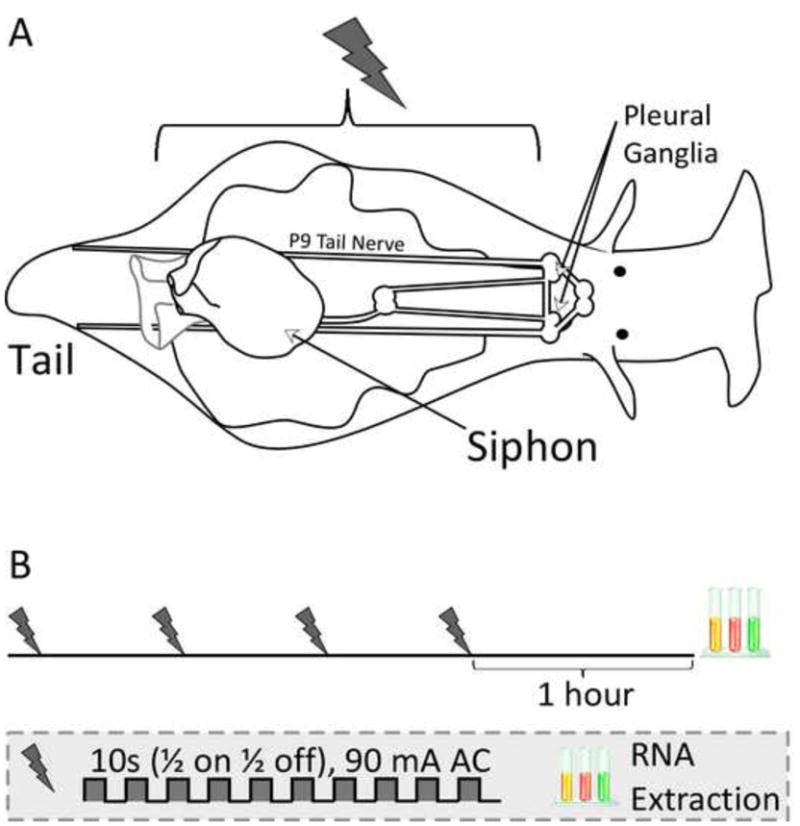Figure 1.

Long-term sensitization of the tail-elicited siphon withdrawal response. A) Noxious shocks to one side of the body alter the duration of the tail-elicited siphon withdrawal reflex (T-SWR) in Aplysia. The T-SWR is a defensive withdrawal of the siphon that is triggered by weak electrical stimulation to one side of the tail. The reflex is mediated by a simple 3-layer network. Stimulation of the tail is relayed in part by the VC nociceptors with axons in the P9 tail nerves and cell bodies in the pleural ganglia. The VCs excite a population of interneurons in the pedal ganglia with axons projecting to the abdominal ganglion. These interneurons activate motor neurons in the abdominal ganglia with axons in the siphon nerve, which cause contraction of the siphon. B) Experimental protocol. Long-term sensitization training consisted of 4 rounds of unilateral noxious shock every 30 minutes. This protocol reliably induces an increase in T-SWR duration lasting at least 24 hours on the side of training. One hour after training, pleural ganglia from the trained and untrained side were harvested separately for transcriptional analysis.
